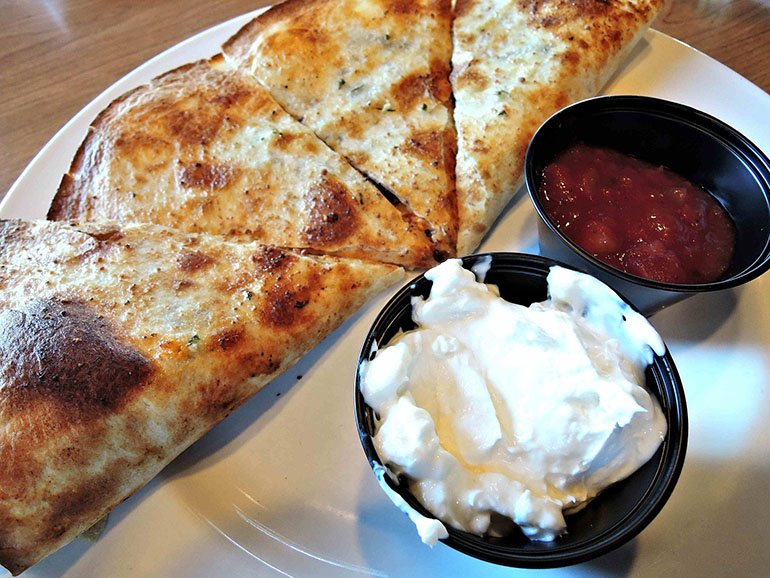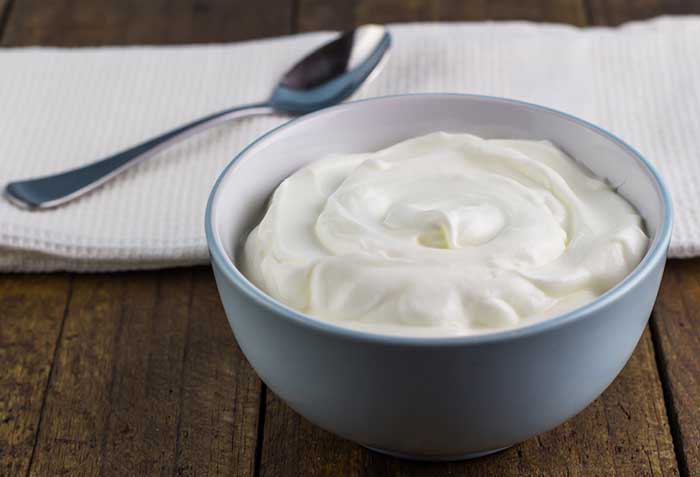Paella and jambalaya are often confused despite different origins, ingredients, and cooking styles. So what exactly separates these dishes? Find out everything you need to know about the differences between these popular one-pot classics.

Jambalaya and paella are two of the best one-pot or one-pan dishes out there. In both dishes, you stew meat or seafood in spices, seasoning, and rice broth. The similarities end here, as they each have unique characteristics that set them apart from one another.
There are three main differences between paella and jambalaya: Color, rice type, and seasoning.
- Paella uses La Mancha saffron, giving the dish its unique yellow color. Meanwhile, jambalaya is either red or brown, depending on whether it’s Creole or Cajun.
- Paella uses bomba rice from Eastern Spain, whereas jambalaya uses long-grain rice.
- Jambalaya is seasoned with the ‘holy trinity’ of Creole and Cajun cooking: Celery, onion, and green bell pepper.

What is paella?
Paella is a traditional Spanish dish cooked in a large pan known as a paellera, or paella pan. While the classic recipe has its roots in Valencia, food fans enjoy varieties of the dish across Spain.
Traditional paella contains saffron-infused short-grain bomba rice with meat, seafood, and vegetables. While varieties differ in the meat or seafood they use, almost all versions use saffron to give the rice its unique yellow color and flavor.
What’s the difference between paella and risotto?
Risotto originates from Italy and shares many of the same ingredients as paella. But, risotto is creamier in texture and more refined because it’s cooked with less liquid. While risotto has a consistent texture throughout, paella is soft on the inside with a dry, crispy top layer.
What’s the difference between paella and pilaf?
Paella and pilaf share similar roots in history but have evolved separately since. Pilaf is typically made with Italian Arborio rice, although some cooks use brown or short-grain white rice. Pilaf is often served as a side dish, while paella is a one-pot meal.
Types of paella
Since its start in Valencia, chefs have adapted paella for other regional Spanish cuisines. As well as the original Valenciana recipe, there is also marisco and mixta.
Paella Valenciana
Regarded as the original, Paella Valenciana dates back over 250 years and is traditionally cooked over an open fire. Its meat is usually either chicken or pork, although some versions do feature rabbit.
Crucially, paella valenciana does not contain chorizo. Any Spanish sausage recipe is often dismissed as ‘Arroz con cosas’, which translates as ‘rice with things’.
Paella de Marisco
Paella de marisco (also known as seafood paella) contains seafood (usually prawns, mussels, and clams) and fish. The dish originated in the coastal areas of Catalonia around Barcelona but is now found across Spain. It’s usually cooked on a paellera, a sizeable flat-topped pan designed specifically to cook paella.
There are many variations of seafood paella, but they often start with a broth made from shrimp heads, garlic, onion, and bay leaves. You then add your choice of mussels, cuttlefish, lobster, or shrimp.
Paella Mixta
As the name suggests, paella mixta (mixed paella) varies in ingredients from region to region. Like other variations, it almost always contains saffron, garlic, and salt and has seafood or chicken broth as its base.
Arroz a la Valenciana
There is some debate around whether this counts as authentic paella, but it deserves to be mentioned nonetheless. Arroz a la Valenciana is common in Latin America, as well as the Phillippines and Nicaragua.
The dish consists of rice, chicken and chorizo, butter, onion, red bell pepper, diced tomatoes, and tomato paste. You can also use beer or white wine.
What’s the best rice for paella?
Traditional Valencian paella contains bomba rice. It’s a short-grain variety from Eastern Spain. Bomba rice can absorb as much water without turning into mush, making it perfect for paella. However, it is notoriously difficult to buy outside of Spain, so try using arborio rice if you can’t get any. While primarily used for risotto, it absorbs moisture well and keeps your paella’s consistency and texture.

What is jambalaya?
Jambalaya is a Creole and Cajun rice dish with roots in West African, French, and Spanish cuisine. You can see its inspiration in paella, as well as Jollof and jambalaya. Just like with paella, it’s traditionally a one-pan dish.
Jambalaya features chicken or andouille sausage, rice, and vegetables. These vegetables are often called the ‘holy trinity’ of Cajun cooking and are onion, green bell pepper, and celery.
Jambalaya vs. gumbo: What’s the difference?
Jambalaya and gumbo are similar, but the main difference is that the rice is served on the side in gumbo. Jambalaya is mixed with everything else and cooked. Compared to gumbo, which usually takes hours, jambalaya can cook in less than an hour and isn’t as broth or stew-like. Gumbo also often contains ingredients like okra and filé powder.
Jambalaya vs. étouffée: What’s the difference?
Jambalaya and étouffée are both types of Cajun and Creole cuisine. They might look similar on the surface, but there is a significant difference between them.
Étouffée is a stew often using a thick sauce made of shrimp or crawfish and doesn’t have the traditional andouille sausage. It also tends only to contain one or two proteins, whereas jambalaya will have a combination of several. Just like gumbo and unlike jambalaya, it’s usually served over separately prepared rice.
Types of Jambalaya
There are two main types of jambalaya, creole and cajun.
Creole jambalaya
Also known as ‘red jambalaya’, creole jambalaya features the ‘holy trinity’ of vegetables as its base. You then add chicken or andouille sausage, tomatoes, shrimp, and more vegetables. Rice and the broth come next, and then it simmers for up to an hour.

Cajun jambalaya
Unlike the creole version, Cajun jambalaya doesn’t contain any tomatoes. Instead of the creole red color, cajun has a much more distinct brown tint to it.
The meat browns and caramelizes at the bottom of a cast-iron pot before adding any other ingredients. The trinity of vegetables then follows, as well as broth and rice. The caramelization from the meat will dye the broth, giving the entire dish a brown color.
Cajun vs. Creole jambalaya
The main difference between Cajun and Creole jambalaya is the use of tomatoes. Tomatoes give the Creole version its brilliant red sheen, while Cajun doesn’t use any. This gives it a deep brown color.
Creole jambalaya is also more commonly found in New Orleans. In contrast, Cajun is found deeper into Louisiana, with the idea that the further away from New Orleans you go, the less tomato you see in food.


